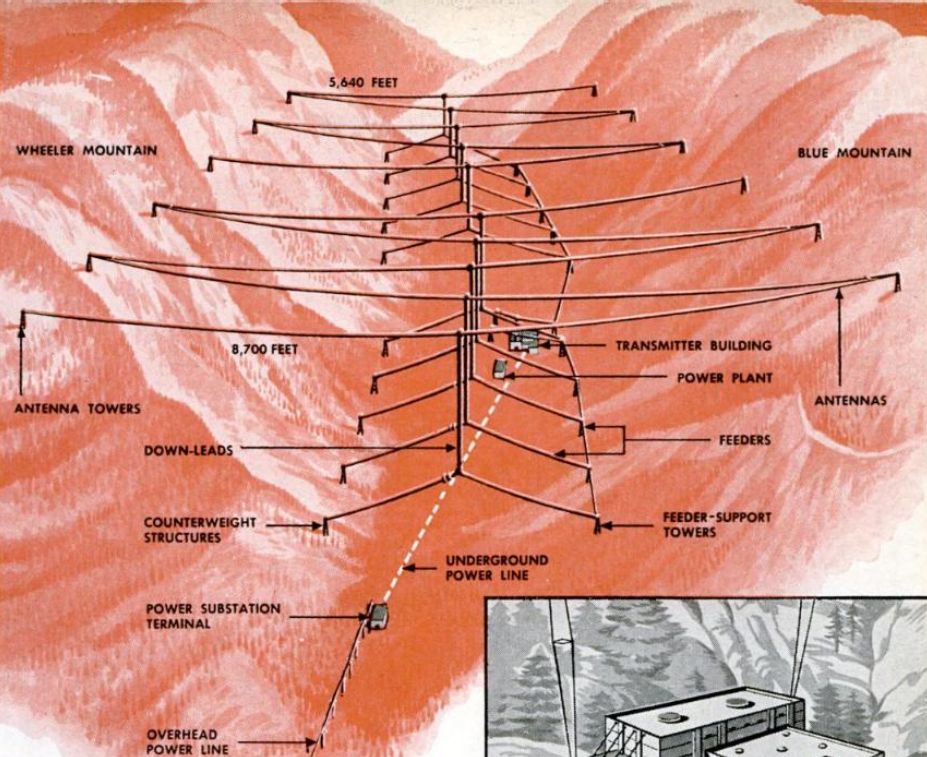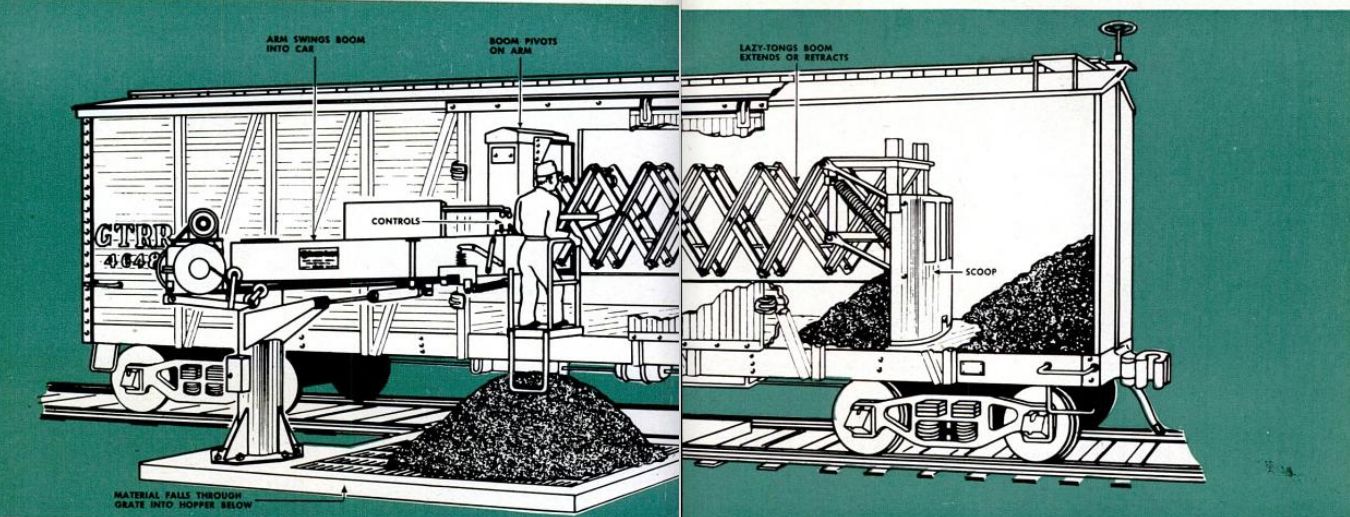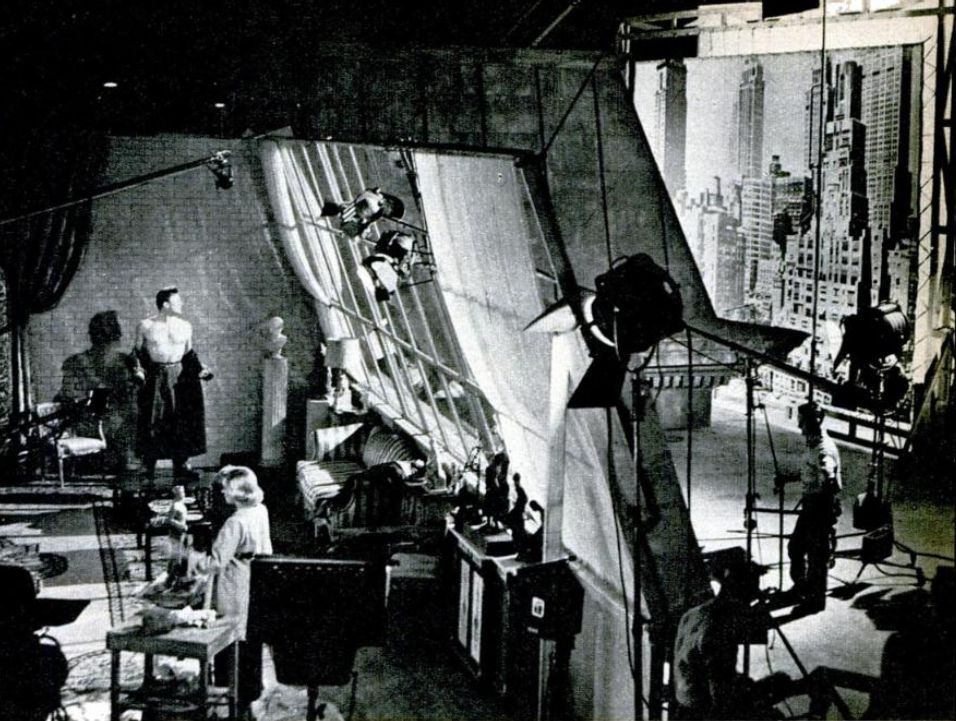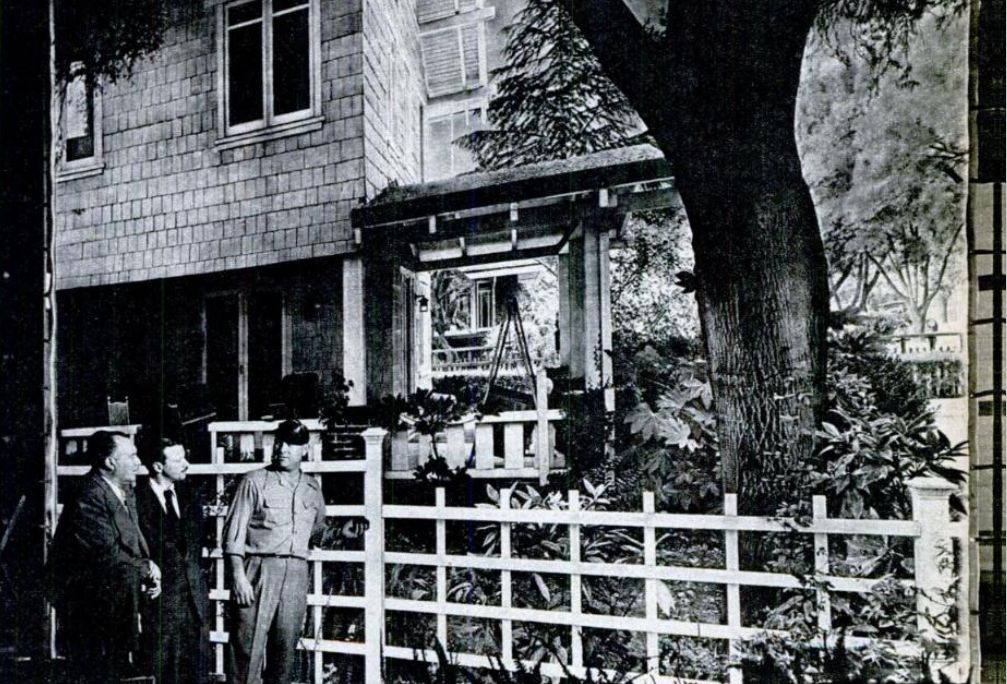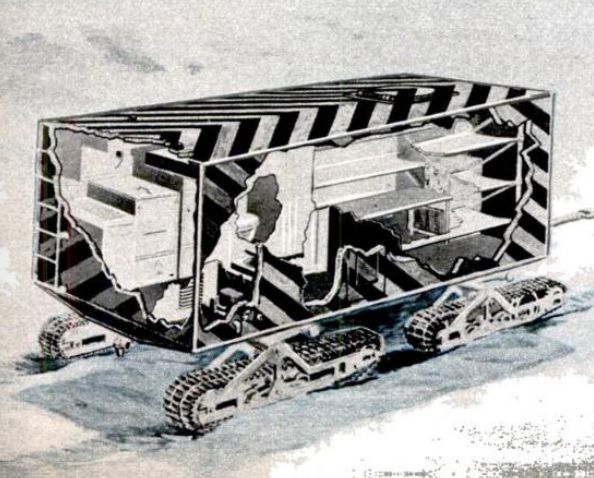A gorgeous noir-like cutaway of an atomic pile by Alexander Leydenfrost. But why does the drawing look so vague and devoid of details?
Partially, that was the Leydenfrost style. His Brooklyn-Battery Tunnel cutaway drawing shows that he emphasized moody shadows and light over the cool and the technical.
But mainly, at the time of this illustration, atomic production was still a closely guarded secret. So Leydenfront had to imagine what a pile must look like based on scant information from The Smyth Report.
Published in July 1945, the Smyth Report, officially known as The Official Report on the Development of the Atomic Bomb Under the Auspices of the United States Government, provided a technical, though generalized, overview of the production of nuclear weapons.
Click to Enlarge to 1609 x 766 px:
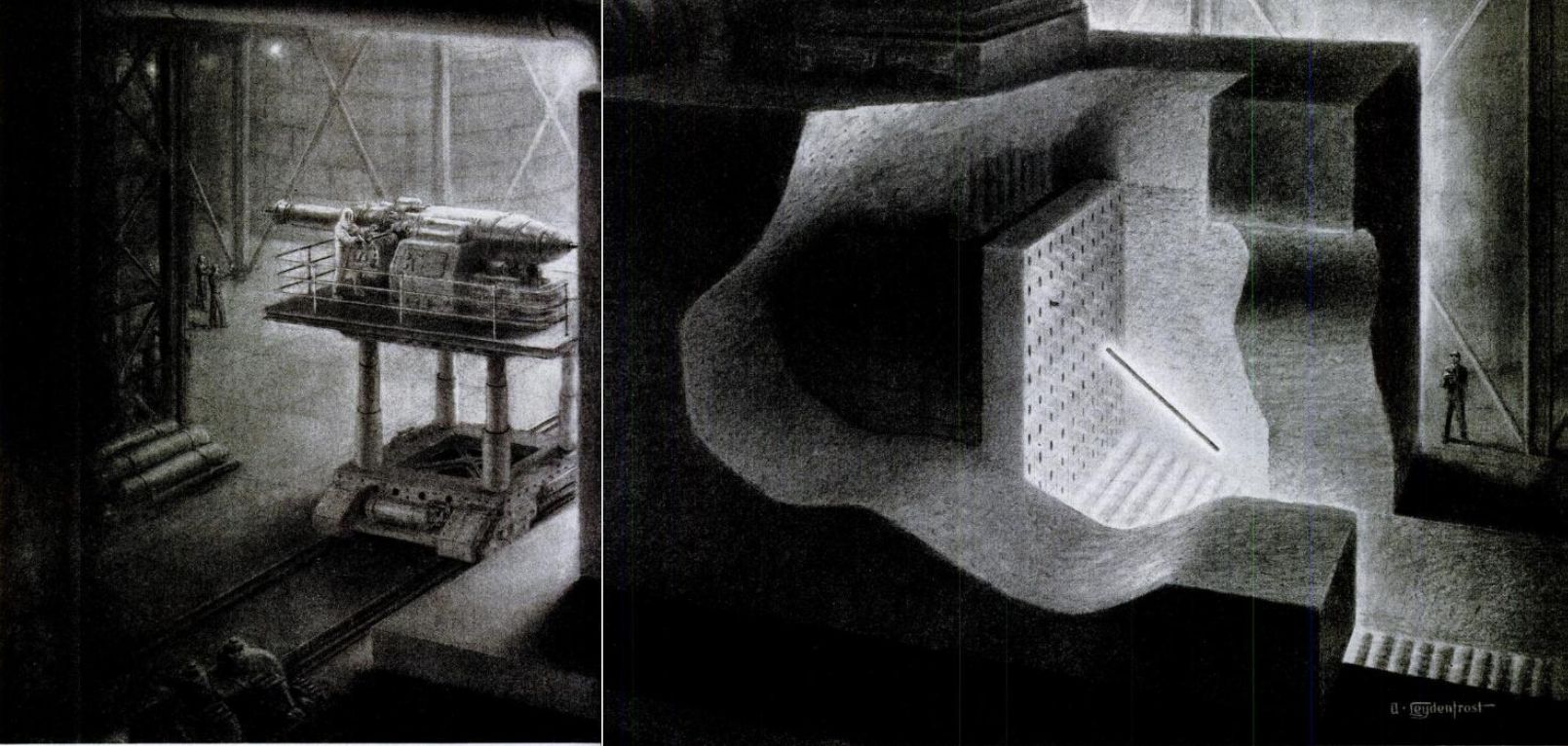
Source: LIFE February 27, 1950

